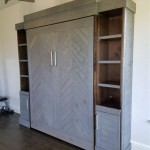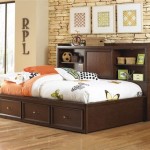The Dimensions of a Queen Size Bed: A Guide to Choosing the Right Fit
A queen size bed is a popular choice for couples, individuals seeking ample space, or those who enjoy spreading out. It offers a comfortable balance between spaciousness and practicality. When deciding whether a queen size bed is right for you, understanding its precise dimensions is crucial. This article will provide a comprehensive guide to the size of a queen size bed, highlighting its key dimensions and why they matter.
Queen Size Bed Dimensions: A Clear Picture
The standard dimensions of a queen size bed are 60 inches wide by 80 inches long. This translates to 5 feet wide and 6 feet 8 inches long. However, it's important to consider the overall footprint of the bed, which includes the mattress, headboard, footboard, and side rails. The overall dimensions can vary slightly depending on the specific design and manufacturer, but generally, you can expect a queen bed to take up around 6 feet 6 inches by 8 feet of floor space.
Why Size Matters: Considerations for Your Bedroom
Knowing the exact dimensions of a queen size bed allows you to make informed choices about the right fit for your bedroom. Here are some key factors to consider:
1. Room Size:
Before purchasing a queen size bed, it's essential to measure your bedroom. The bed should fit comfortably while leaving enough space for movement around the bed and for placing furniture such as nightstands. A rule of thumb is to allow at least 2 feet of space on each side of the bed for walking and for easy access to the bed.
2. Mattress Size:
The size of the mattress will determine the overall footprint of the bed. While queen size mattresses generally have a standard dimension of 60 inches by 80 inches, some manufacturers might offer slight variations. Ensure you purchase a queen size mattress compatible with the bed frame you choose.
3. Bed Frame and Headboard:
The bed frame and headboard can significantly impact the overall space occupied by the bed. Some headboards can be very large and protrude into the room. Consider the size of your bedroom and your preferred aesthetic when choosing a bed frame and headboard.
Factors Affecting Size Perception:
While the standard dimensions of a queen size bed are consistent, some factors can influence how large a bed appears in a particular space. Factors like the ceiling height, wall color, and overall room design can change the perception of the bed's size.
1. Ceiling Height:
A higher ceiling can make a bed appear smaller and more proportioned to the room. Conversely, a lower ceiling might accentuate the bed's size and make the room feel smaller.
2. Wall Color:
Darker walls can make a room feel smaller and draw attention to the bed, making it seem larger. Lighter walls can create an illusion of more space and can make the bed appear smaller.
3. Overall Room Design:
The layout and furniture placement in a room can also affect the perception of the bed's size. If the room is cluttered with furniture, a queen size bed may feel cramped. On the other hand, a minimalist design can make the same bed feel more spacious.
Understanding the size of a queen size bed and considering factors like room size, mattress dimensions, and bed frame can help you choose the right fit for your bedroom. With careful planning, you can create a comfortable and stylish sleeping space that meets your needs and preferences.

Queen Bed Dimensions A Guide Nectar Sleep

Mattress Sizes Chart And Bed Dimensions Guide Amerisleep

Queen Bed Dimensions A Guide Nectar Sleep

Bed Sizes Guide Port Bay

Mattress Sizes Chart And Bed Dimensions Guide

Mattress Sizes And Bed Dimensions For Room Size Needs Eachnight

Mattress Sizes And Dimensions Guide Clarity

Mattress Size Chart Bed Dimensions 2024 Guide U S News
What Is The Width Of A Queen Size Bed Frame Quora
What Is The Standard Size Of King Queen And Bed Covers Quora







